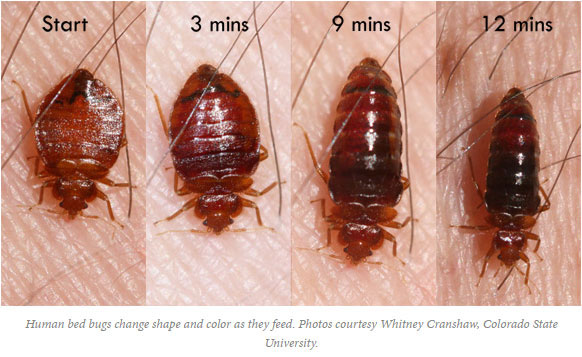Reliable A1 Bed Bug Treatment Houston - Get Rid of Bed Vermin
Reliable A1 Bed Bug Treatment Houston - Get Rid of Bed Vermin
Blog Article
Comprehending the Lifecycle of Bugs for Targeted Control Strategies
Comprehending the lifecycle of insects is a fundamental aspect of efficient pest monitoring techniques. By understanding the numerous stages of growth that insects undertake, a more targeted and specific approach can be taken on to control their populaces. This knowledge not just clarifies the vulnerabilities within the pest lifecycle but likewise paves the method for applying calculated measures that can interrupt their growth and reproduction cycles. Via a deeper understanding of how insects evolve and flourish, tailored control approaches can be developed to resolve specific points in their lifecycle, ultimately causing even more effective pest monitoring end results.
Relevance of Comprehending Parasite Lifecycle
Understanding the lifecycle of pests is crucial for establishing efficient and targeted control approaches in pest management. By understanding the numerous phases a parasite undergoes from egg to grownup, pest control professionals can determine weak spots in the lifecycle where treatment can be most effective. For example, knowing when larvae are most energetic can assist identify the ideal timing for applying larvicides. Furthermore, recognizing the lifespan of a bug varieties can help in anticipating population development patterns and potential invasion threats.
Additionally, recognizing the particular ecological problems essential for every stage of the bug's lifecycle can lead decisions on habitat alteration or exclusion techniques to lower and disrupt the lifecycle pest populations. This expertise enables pest monitoring specialists to apply aggressive actions instead of relying only on reactive therapies, resulting in more sustainable and long-term insect control solutions. Ultimately, a complete understanding of bug lifecycles equips bug control specialists to customize their methods efficiently, decreasing ecological impacts and taking full advantage of control outcomes.
Key Phases in Parasite Development
To effectively carry out targeted control techniques in parasite management, an important aspect exists in adequately determining and understanding the essential phases in bug development. Pest growth typically includes numerous key stages that are essential for their lifecycle and administration. The initial stage is the egg stage, where bugs lay eggs that later hatch out into larvae. Larvae then proceed into pupae, a stage where they go through metamorphosis before emerging as grown-up pests. Comprehending these stages is essential as it assists in identifying susceptible points in the lifecycle where control procedures can be most effective.
:max_bytes(150000):strip_icc()/Bed-bug-control-tips-and-tricks-2656377-e580f433c55a4a98826e429753062084.jpg)
Susceptabilities in Parasite Lifecycle
Throughout the different stages of a pest's lifecycle, distinct susceptabilities arise that can be purposefully targeted for efficient control actions (A1 bed bug removal houston). One essential vulnerability exists Check This Out in the egg phase, where insects are typically a lot more vulnerable to specific pesticides or biological control representatives due to their soft external covering, making them easier targets for intervention. Comprehending these vulnerabilities in the insect lifecycle is necessary for establishing specific and reliable control approaches that properly handle insect populaces while lessening ecological influence.
Carrying Out Targeted Control Procedures

Carrying out targeted control measures normally includes a multi-faceted strategy. This may include habitat modification to make the setting much less friendly to insects, such as eliminating standing water for insect control or securing access my explanation factors for rats. Additionally, biological control methods can be utilized, where all-natural killers or virus are presented to maintain insect populations in check.
Integrated Pest Monitoring (IPM) strategies that incorporate different control procedures in a coordinated and lasting way are typically the most effective in accomplishing long-lasting bug administration goals. By applying targeted control steps based on a detailed understanding of pest lifecycles, bug populaces can be efficiently controlled while minimizing risks to human wellness and the setting.
Improved Bug Management Practices
Furthermore, the incorporation of biological control agents, such as all-natural killers or pathogens of bugs, can help in reducing reliance on chemical pesticides and advertise a much more balanced ecosystem. Implementing physical barriers and traps can also be part of enhanced parasite administration practices, supplying safe and targeted solutions for parasite control. Furthermore, making use of scents and other semiochemicals can interrupt pest mating patterns and communication, bring about reduced insect populaces with time.
Conclusion
By identifying essential phases in pest development and susceptabilities in their lifecycle, targeted control measures can be implemented to lessen pest populaces. Enhanced insect administration techniques can help decrease the reliance on broad-spectrum pesticides and advertise even more environmentally friendly and sustainable bug control methods.
Understanding the click here for info lifecycle of bugs is essential for developing effective and targeted control approaches in pest monitoring. By comprehending the various stages a pest goes via from egg to grownup, insect control specialists can identify at risk points in the lifecycle where intervention can be most effective. Ultimately, a comprehensive understanding of pest lifecycles encourages bug control specialists to customize their methods effectively, reducing environmental influences and optimizing control end results.
By applying targeted control actions based on a complete understanding of insect lifecycles, bug populations can be successfully regulated while reducing threats to human wellness and the environment.
By determining crucial stages in parasite advancement and susceptabilities in their lifecycle, targeted control measures can be implemented to reduce pest populations.
Report this page